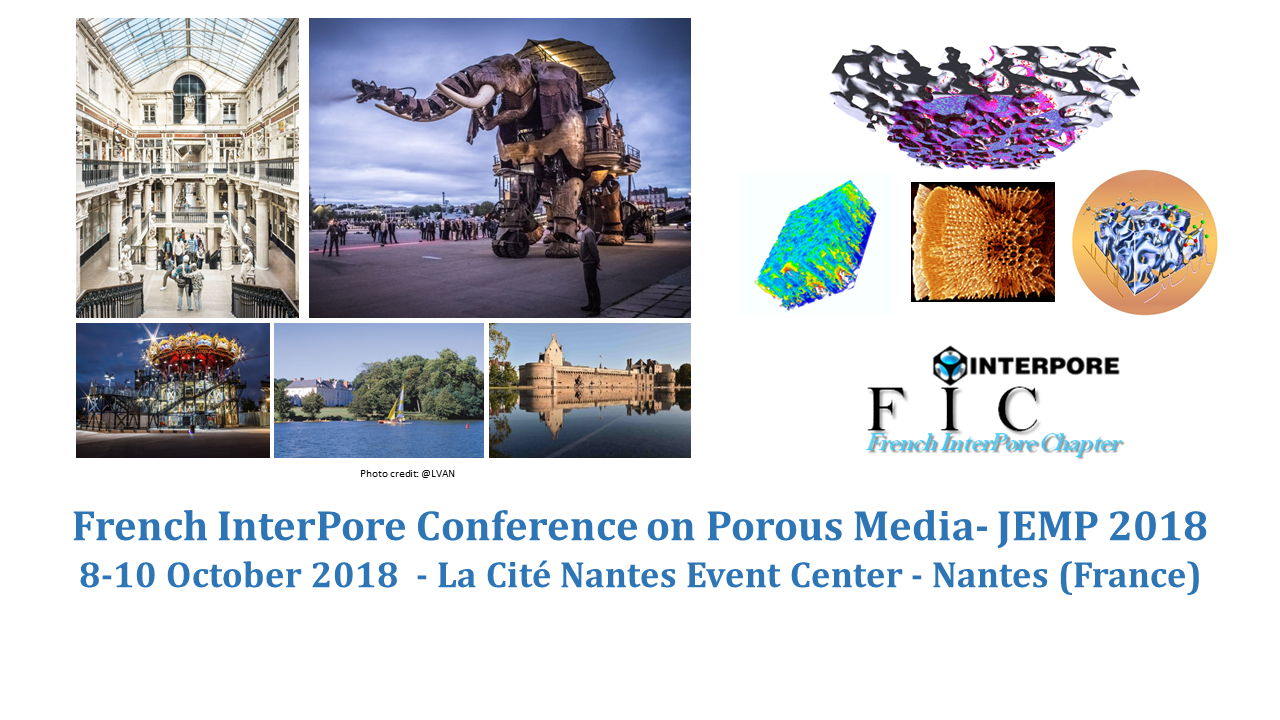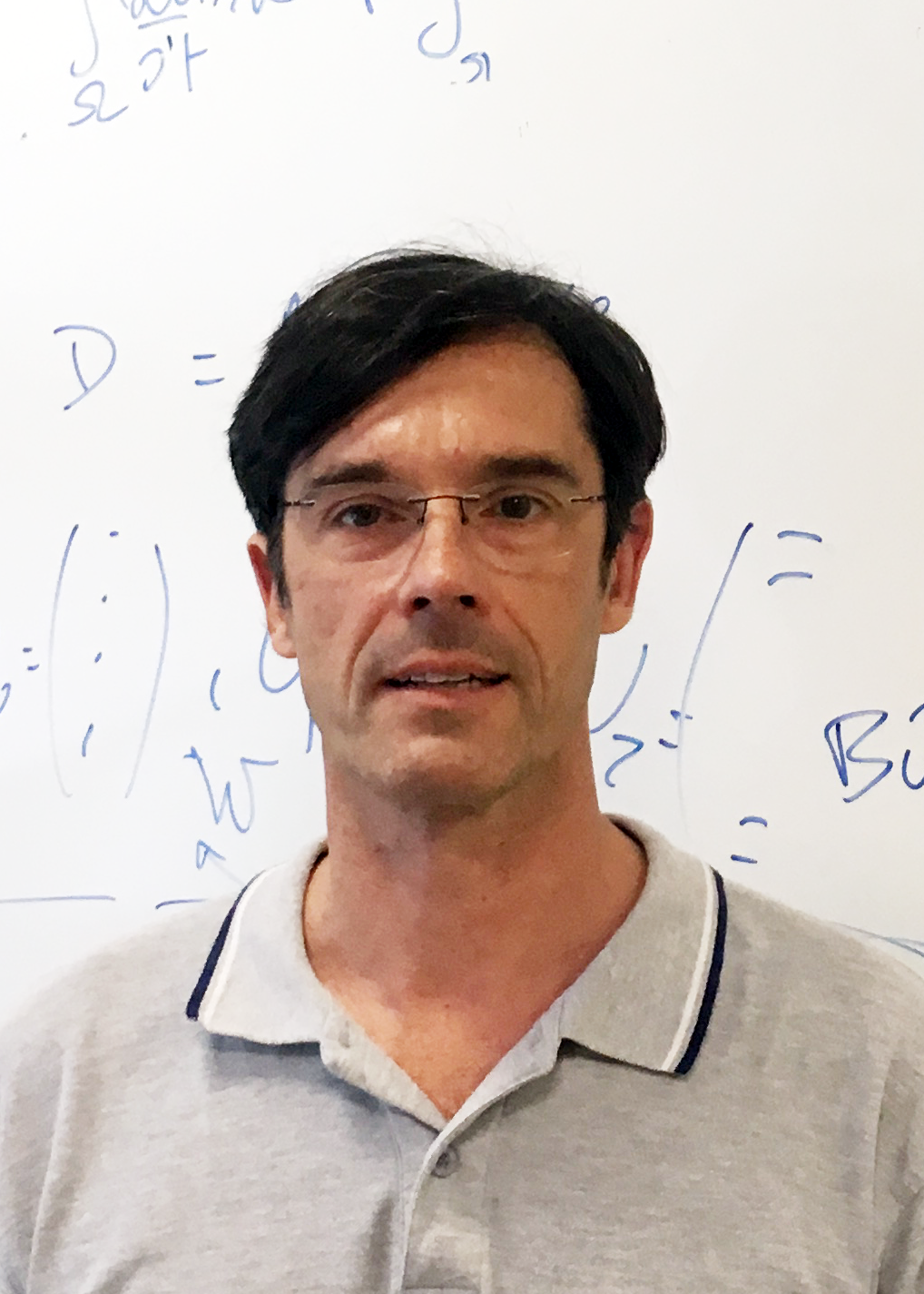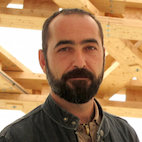
Invited talksSome peculiarities related to fibrous media : a family of porous media that is not like any other ones L. Orgéas, Université Grenoble Alpes, CNRS, Grenoble INP, 3SR Lab, 38000 Grenoble, France
Keywords : Fibrous media, microstructures, transport properties, mechanical properties Fibrous media are used in many applications : handling cables, textiles or nonwovens for clothes, health or composite materials, filters, papers, acoustic or thermal insulation, living tissue…They belong to the porous and discrete media family, being assemblies of discrete deformable slender bodies. Their architecture can be geometrically complex, ordered or disordered and usually anisotropic. Their microstructure and their physical and mechanical properties reveal strong similarities with foams and cellular materials or granular materials. However, the deformability and the slenderness of fibers together with their discrete nature provide fibrous media peculiar microstructure features and unusual macroscopic behaviors. This paper explains these peculiarities as well as the bottlenecks they induce for experimental, theoretical and numerical analyses. Several examples are shown to illustrate this point.
Solutions of Young-Laplace Equation and Stability Analysis of capillary bridges. O. Millet, H. N.-G. Nguyen, G. Gagneux , LaSIE, UMR CNRS 7356, Université de La Rochelle.
 Keywords : Capillary bridges, Young-Laplace equation, stability analysis We revisit from an inverse problem method the exact resolution of Young-Laplace equation for capillary doublets. The missing information on the pressure deficiency (which is often an unknown of the problem) is restored without experimental device of suction control. Only the use of a digital camera with macrozoom allows to measure the suction according to the observed value of the gorge radius, then compared to critical bounds. The sought value results immediately via a set of available explicit formulas. We establish a simple criterion based on the observation of the contact points, of the wetting angles and the gorge radius, to classify in an exhaustive way the nature of the surface of revolution: portion of nodoid, of unduloid, both with concave or convex meridian, of catenoid, of cylinder or of circular profiles (toroid). In every case, we propose an exact parametric representation of the meridian based on the observed geometry of the boundary conditions and on a first integral of Young-Laplace equation that traduces a conservation energy principle. A theoretical stability criterion and conjectures on breakage will be proposed and discussed.
Thermal Energy Storage for concentrated solar power plants Régis Olivès, PROMES-CNRS - Université de Perpignan Via Domitia, Perpignan France Keywords : Thermal energy storage, packed bed, heat and mass transfer, material Thermal Energy Storage (TES) is commonly acknowledged as a key component for Concentrating Solar Power plants in terms of process optimization, increased capacity factor, grid integration, reduction in fossil fuel backup and reduction in Green House Gas emissions. In these processes, the energy is stored as heat. In this way, it is possible to shift the production to satisfy electrical needs in the grid and particularly peak loads. Nevertheless, the TES component is used also to protect the power block and especially the involved turbine against the solar variations. Now, these energy storage systems are the second in term of installed power in the world, after the pumped hydroelectric storage, the most widely implemented large-scale energy storage, and before electrochemical storage. The aim is to present TES technologies in order to highlight major critical limitations and innovation opportunities. The mature two tanks molten salt storage technology will not fulfill all constrain of the expected energy transition and alternative storage materials and systems are highly needed. Innovative approaches based on thermocline type TES using different sorts of material (concrete, natural rocks, recycled ceramics...) seems to offer the interesting potential in the future. Thermocline is a packed porous bed that is heated during the charging cycle by a fluid flowing through it. Removal of the stored energy is done by reversing the flux direction. The implementation of these systems in a concentrated solar power plant implies the optimization of the packed bed. We propose to analyze the limitations that can be the ratcheting effect in the case of unstructured solid, the poor heat exchange coefficient between solid and fluid like air, the fluid/solid compatibility, the efficiency that can be evolves during cycles of charge and discharge, the availability of the material and the selection of new materials...
Simulation of thermal transport in nanoporous silicon with various geometries Konstantinos Termentzidis, CETHIL UMR 5008, CNRS, INSA Lyon, 9 Rue de la Physique, 69100 Villeurbanne - France
Keywords : Thermal conductivity, nanoporous, silicon, Molecular Dynamics, Monte Carlo The thermal conductivity of nanoporous materials or nanocomposite materials with a matrix containing nanoinclusions or liquids is drastically reduced compared to the bulk properties. The dominant parameters for the heat transfer are the volume fraction (porosity), the size of pores and the neck distance between two neighboring pores, the surface density and the orientation of pores compared to the heat flux (spherical or cylindrical pores) and the existence or not of native oxides or an amorphous shell around the pores. The thermal conductivity of a series of nanoporous materials studied with Molecular Dynamics and by Monte Carlo resolution of the Boltzmann Transport Equation for phonons is presented and compared to experimental results when the later are available. The presented examples are : spherical or cylindrical (phononic crystals) nanpores which are periodic or not, with and without amorphous shells around the pores, nanocomposite materials with solid or liquid nanoinclusions.
Capillary condensation induced stress in complex mesoporous materials R. J.-M. Pellenq, The MIT / CNRS / Aix-Marseille University Joint Laboratory "Multi-Scale Materials Science for Energy and Environment" <MSE>2, Massachusetts Institute of Technology, 77 Massachusetts Avenue, Cambridge, MA, US We propose a general and quantitative numerical framework to address the poro-mechanical effect arising from capillary stress using a lattice-gas Density Functional Theory. This is exemplified in the case of water confined to the complex pore network of a multi-scale nanogranular model of cement hydrates. We first demonstrate that this meso-scale modeling approach entirely parameterized from atomistic scale simulation results can predict the room temperature hysteretic water adsorption/desorption isotherm in a quantitative fashion. The precise location of water distribution in the pore void allowed us to calculate the capillary force acting on each cement hydrate nanograin. Combined with grain-grain colloidal interactions, we found that capillary stress is an effective mechanism for stress relaxation in granular/colloidal materials hence improving cement paste durability. In particular, our predicted drying shrinkage strain versus relative humidity results quantitatively agree with recent experiments on Ordinary Portland Cement.
Contribution of X-tomography to the understanding of transport properties in porous media Jerome Vicente, IUSTI, UMR CNRS 7343, IUSTI, Aix Marseille université, 5 rue Enrico Fermi 13013 Marseille
|
| Online user: 1 | RSS Feed |

|



